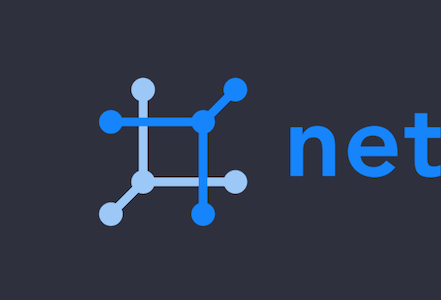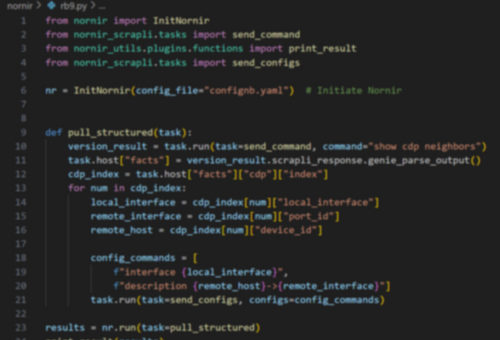network automation
leverage the tools, learn, and add value
FIRST STEPS
We empower businesses with intelligent network automation, security, and infrastructure management solutions, starting with establishing a reliable and accurate source of truth. We offer Netbox as our preferred platform, but we can also integrate with existing vendor solutions such as SolarWinds, IP Fabric, Infoblox, and more.
KEEP BUILDING
Small tasks provide a solid foundation for learning network automation and can gradually lead to more complex automations, such as:
-
-
Automated provisioning of network services: Set up and configure network services like DHCP, DNS, and RADIUS automatically based on predefined criteria.
-
Automated configuration changes: Trigger configuration changes across multiple devices based on specific events or conditions, such as changes to network topology or security policies.
-
Automated troubleshooting and remediation: Respond to network problems by automatically applying corrective configurations or escalating issues to the appropriate team.
-
Automated network validation and compliance: Validate network configurations against standards or compliance requirements, identifying and rectifying discrepancies.
-
WHAT TO AUTOMATE
It's a good strategy to start small and automate simple tasks when introducing network automation to your team. This helps them get comfortable with the tools and concepts, building their confidence and expertise. As they become more proficient, they can tackle more complex automations. Here are some examples of small tasks to automate:
-
Provisioning new devices: Automate the process of assigning IP addresses, configuring device parameters, and adding them to the network inventory.
-
Configuring device templates: Create templates for common configurations, such as VLAN settings or firewall rules, and automate their application to multiple devices.
-
Inventory management: Automate the collection and update of device inventory information, ensuring that all network devices are accurately represented in your source of truth.
-
Documentation generation: Automate the generation of network documentation, such as device configurations or topology diagrams, from the data stored in your source of truth.
-
Fault management: Automate the detection and notification of network faults, such as link outages or configuration errors, to expedite problem resolution.
-
Performance monitoring: Automate the collection and analysis of network performance metrics, identifying potential bottlenecks or anomalies that require attention.


